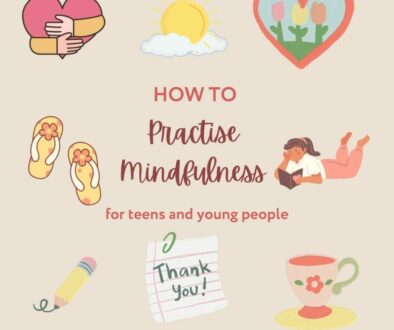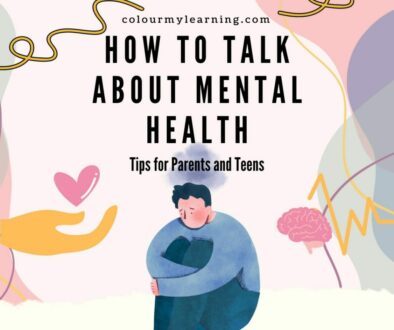6 Ways to Help Instil a Growth Mindset in Young Children
The human brain is like a play dough. All the positive and negative interactions that we have, thoughts that run throughout the day, and emotions that we feel, shape and mould the architecture of our brains since the day we are born. During the first 1000 days of life, more than 700 neural connections are rapidly formed through interactions.
According to the Center on the Developing Child at Harvard University, the first five years of life are crucial to the development of brain, and for a child’s success in later life. The early years literally build the brain from scratch. Parents have a strong impact on the child’s tender mind and future learning. The actions you carry out and the words you use – everything is absorbed by your young child, and a certain mindset is created. This is where parents and other primary caretakers need to work on instilling a growth mindset in young children.
The early years literally build the brain from scratch. Share on X6 Ways to Help Instil a Growth Mindset in Young Children
As a first-time mom, I was delighted whenever my son accomplished a task. I praised him for finishing his meal and thanked him when he allowed me to change his diaper peacefully. What I didn’t know that I was unintentionally shaping his life with a fixed mindset. Carol S. Dweck, a professor of Psychology at Stanford University, published her famous research on mindset psychological traits. Her work’s focus is on how you can train a mind to foster success.
Here I’d like to quote Debbie Millman, an American writer, “If you imagine less, less will be what you undoubtedly deserve. Do what you love, and don’t stop until you get what you love. Work as hard as you can, imagine immensities…”.

According to Dweck, there are two types of learning mindsets – fixed and growth. With a fixed mindset, we believe that our talents and intelligence are built-in and cannot be improved. When we fail to achieve a certain goal, we assume we weren’t cut out for it and give up. It limits our chances of success. On the other hand, a growth mindset is all about the process, rather than the results. Through learning and hard work, we understand that can polish our skills and develop new talents.
I didn't know that I was unintentionally shaping my son's life with a fixed mindset. Here's how I changed Share on XLike most teaching methods, instilling a growth mindset is most effective during childhood, i.e. from 0 to 7 years of age. As mentioned previously, the brain is developed during the early years of life. For this reason, it is important to instill a growth mindset in young and here is how you can help them.
1. Model Growth Mindset Thinking and Behavior
Those little eyes are always watching, and those tiny ears are always listening. Our children learn from our behaviour and attitude towards our daily life. Ask yourself if you have a positive outlook. How do you react when you fail? Children are keen observers and notice everything. One of the best ways to encourage growth mindset is talking positively out loud. You may feel awkward at first, but you will get used to it eventually.
Instead of cursing when you burn the cake, say, ‘It’s okay. Next time I will try harder and keep watch’.
When you have to redo a work assignment, don’t behave in a cranky manner. Say, ‘I will practice and get it right’. Take on difficult challenges with enthusiasm and teach them about perseverance and tenacity.
When children overhear the positive phrases and observe the unwavering approach, they learn that it is acceptable to make mistakes. The important thing is to not give up and continue to improve through effort.
Is too much praise bad for a child? Find out! Share on X2. Congratulate the Process, Not the Result
The growth mindset is supposed to encourage children to continue to improve themselves. Be it a grade or an activity, the aim is to work towards the goal. For instance, when they get a good grade in a test, praise their hard work and effort. Don’t praise their intelligence by expressing how smart they are.
You can pass a positive remark, ‘I know you worked really hard on it! That’s why you got such a great result!’. If they lose a game or fail to make it to the team, prevent them from feeling left out and as if they aren’t cut out for it. It sends a wrong message. Instead, motivate them by telling them to try out new strategies. Recognizing effort and praising it are far more important than the actual outcome.

3. Educate Your Child About Good and Bad Thoughts
There is an illustrated children’s book called Bubble Gum Brain that talks about two kinds of minds; a bubble gum brain that represents growth mindset and a brick-brain that represents fixed mindset. It is a wonderful book you can read to your kids to teach them about the importance of determination and acceptance of failure.
Ask your children about their thoughts. If they are having a negative approach towards a certain activity, teach them to challenge it. Just like grown-ups, the inner voice can condition kids to play it safe and have a limit. It is up to you to raise your child in a manner that allows them to take up daunting challenges.
Those little eyes are always watching, and those tiny ears are always listening. Share on XYou can create a sketch at home about good and bad thoughts. Divide the page into portions by drawing a line. Label one section as good, and the other one as bad.
In the good thoughts sections, add optimistic statements including, ‘If I keep practicing, I am going to figure it out!’ and ‘It is all right to make mistakes. I am still learning.
On the bad section, add cynical statements such as ‘I can’t do it. It is too hard!’ and ‘I will never be smart like her’. You can even ask your child to add some of their doubtful and positive thoughts and help them deal with them.
4. It Takes Time to Get a Hang of It
I can’t reach the kitchen counter…
I can’t ride the bicycle…
I can’t spell my name…
Yet!
For children, the world is HUGE, and issues that seem trivial to us can be causing chaos in their young brains. It is critical for a parent to teach kids the power of time. You don’t get up one morning and learn to play the piano. It takes time and practice to get a hang of a task. There will be many obstacles along the way, but persistence and practice can help them achieve what they desire.
For children, the world is HUGE, and issues that seem trivial to us can be causing chaos in their young brains. Share on X5. Set Goals – SMART
Help your children to set up goals for themselves. You can guide your child to devise a plan, achieve the aims and boost their confidence along the process. According to Carol Dweck, there are five golden rules to set up a goal. Ironically, the acronym is SMART.
S – Specific – Ask your kid what exactly is their objective and how do they plan to work upon it?
M – Measurable – How will they define the success?
A – Attainable – Is the goal realistic? If you kid is planning to captain a ship, you may want to intervene!
R – Relevant – Does the goal have any beneficial attributes?
T – Time Bound – What’s the time limit?
Through this method, you can inspire your child to imagine the infinite possibilities of achieving their dreams.

6. Don’t Label Your Child
Don’t create boundaries for your child by labelling them. Whether it is a good label or a bad one, attaching a specific label can prevent the child’s mind from growing, changing, and improving. Yes, they may be smart and talented innately, but the effort they put in is equally important for the success. Similarly, negative phrases can discourage child from learning and trying harder. If they are weak at math and you pinpoint it continuously, they will simply want to give it up.
Don't create boundaries for your child by labelling them. Share on XInstilling a growth mindset is not as complicated as it sounds. It is all about reframing our words and behavioural patterns. Talk to your child about the benefits of practice, how to embrace slip-ups and teach them to handle constructive criticism.
These are some of our best ideas for helping your child develop a growth mindset. If you have other great tips for developing a growth mindset, let us know!
RELATED: Growth Mindset: Best Books to Read with and Encourage Your Children
















